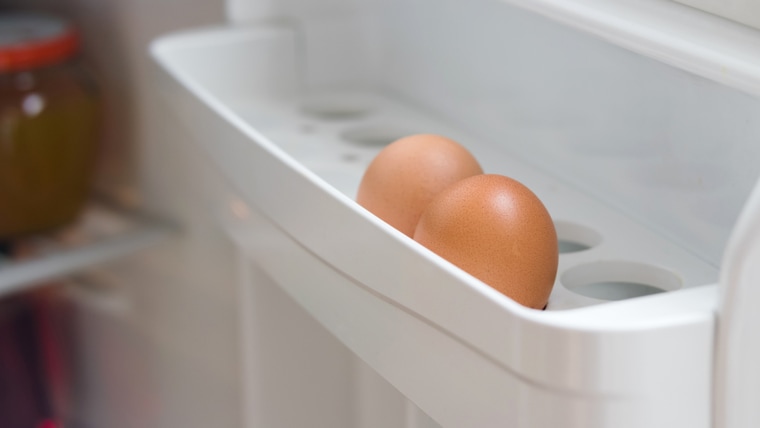For most people, spring cleaning is the vision of a major "freshening up" of your home. But what about the fridge as part of this spring ritual? If you're like most people, your fridge is likely still bulging from extra jars and bottles of foods from the winter holidays. Now is the time to play your own game of "keep or toss." Follow these 6 simple hacks and tips to clean out, clean up and restock the food in your fridge this spring.
1. Keep it clean
Instead of a harsh cleaning spray (never use cleaners with bleach or ammonia), make your own solution. Use a baking soda and water mix (1 tablespoon of baking powder per cup of water) or a mild soap and water mix (aim for unscented soaps) to wash the shelves and bins. For dried out spills, make a paste of baking powder and water, then rub over the spill (you can avoid this in the future by wiping up all spills when they happen). To absorb odors, keep a box of open baking soda in the fridge — don't forget to replace it every one to three months.
2. Toss old condiments
Go ahead and throw out the nearly empty jars, almost-finished bottles and items that are long past the expiration date — more than a month is a general guideline. Also, get rid of duplicates. For the condiments you are saving, open them up and wipe the inside and outside lid with a damp paper towel.

3. Limit foods stored in the door
The door is the warmest place in the fridge because the temperature goes up when the door is opened. Condiments, jelly and juices can be safely stored in the door. Place dairy products like milk, yogurt and cheeses on the top or middle rack of the fridge. Skip the ready-made egg container for the door. Instead, store your eggs in the original container, in the main part of the fridge.
4. Thaw your packaged foods safely
Place frozen beef or chicken on a plate to thaw safely in the fridge. This way the raw juices won't have a chance to contaminate other shelves or foods. Limit fridge cleanups by placing a plate underneath berry boxes or other porous containers that could possibly leak.
5. Wrap up leftovers properly
To keep your leftovers fresh, wrap them in plastic wrap or place them in a zip-top plastic bag for up to three days. If you use foil to wrap your leftovers, make sure to label the package. Toss the uneaten food within five days. For optimal temperature stability, store leftovers on the middle shelves. Also, keep leftovers in the front so you don't forget to eat them before they start to turn. To extend the life of open hard cheeses, wrap them in wax paper and place them in a plastic bag.
6. Keep your greens fresh
Any greens, including herbs, can be washed and dried before you store them in the fridge. Simply wrap the clean greens in a few paper towels to keep them fresh and to help prevent wilting. For herbs, tie the stems together into a bouquet and place in a glass or sturdy plastic cup filled with one to two inches of water. Your fresh herbs will last up to a week longer.
Madelyn Fernstrom, PhD, is the NBC News Health and Nutrition Editor.
RELATED: Alex Guarnaschelli's tips for making summer herbs last all year long